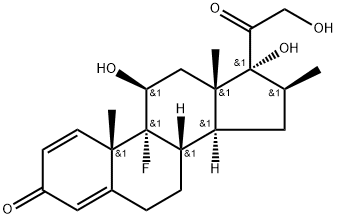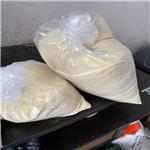hormone drugs
Betamethasone, belongs to adrenal corticosteroids, it is a isomer of dexamethasone , and the role of betamethasone is similiar to prednisolone and dexamethasone , it has anti-inflammatory, anti-rheumatic, anti-allergic and suppression of the immune and other pharmacological effects, its anti-inflammatory effect is stronger than dexamethasone, triamcinolone, hydrocortisone etc. , it can reduce and prevent tissue response to inflammation and eliminate heat, redness and swelling caused by local non-infectious inflammation, thereby reducing the performance of inflammation, anti-inflammatory effect of this product 0.3mg is equal to dexamethasone 0.75mg, prednisone 5mg or 25mg cortisone .
Betamethasone sodium retention effect is a hundred times more than hydrocortisone, in primary adrenal hypofunction, it can be used together with glucocorticoid for replacement therapy ,and it is used for preventing or inhibiting cell-mediated immune response, delaying allergic reactions and reducing the primary immune response expansion ,it is used for low renin and low aldosterone syndrome and autonomic neuropathy induced orthostatic hypotension.
Currently betamethasone is also used for the treatment of active rheumatoid arthritis, rheumatoid arthritis, lupus, severe bronchial asthma, severe dermatitis, acute leukemia, atopic dermatitis, eczema, neurodermatitis, seborrheic dermatitis, and pruritus and comprehensive treatment of certain infections.
The product is contraindicated in severe psychiatric history, active duodenal ulcer, recent gastrointestinal anastomosis, heavier osteoporosis, overt diabetes, severe hypertension, virus , bacterial, fungal infections which are failed to control by the use of antimicrobial agents , thrombophlebitis, skin infections, such as impetigo, tinea, jock itch and so on.
The above information is edited by the chemicalbook of Tian Ye.
Chemical Properties
White crystalline powder. Mp 231-234 deg.] C (decomposition). Odorless. Acetate Betamethasone ([987-24-6]) is also white crystalline powder, melting point 205-208 ℃, slightly soluble in alcohol, ethanol, and very slightly soluble in chloroform or ether, insoluble in water, odorless.
Uses
Hormone drugs.It is mainly used for anti-inflammatory and anti-allergic. It is suitable for rheumatoid arthritis and various skin diseases. Betamethasone role is similiar to dexamethasone, its anti-inflammatory effect is stronger than dexamethasone, triamcinolone, hydrocortisone and it has few side effects.
production method
According to U.S. Patent No. 3,164,618, betamethasone acetate is dealt with hydrochloric acid in methanol-chloroform-water mixture , it can be converted to betamethasone.
Category
Toxic substances
Toxicity grading
Middle toxic
Acute toxicity
Oral-mouse LD50:> 4500 mg/kg
Flammability and hazard characteristics
Combustible;Its combustion produces toxic fumes of fluoride.
Storage Characteristics
Ventilated, low-temperature ,dry storeroom.
Extinguishing agent
Dry powder , foam, sand, carbon dioxide, water spray.
Description
Betamethasone is a synthetic corticosteroid. Like other corticosteroids, betamethasone has anti-inflammatory actions. Betamethasone also accelerates fetal lung maturation and has been used to decrease neonatal mortality and morbidity in infants born before 34 weeks of gestation.
Description
Shortly after the introduction of dexamethasone, betamethasone, which differs from dexamethasone only in
configuration of the 16-methyl group, was made available for the treatment of rheumatic diseases
and dermatologic disorders. This analogue, which contains a 16β-methyl group, has received sufficient clinical
trial examination to indicate that it is as effective as dexamethasone or, perhaps, even slightly more active.
Although this drug has been reported to be less toxic than other steroids, some clinical investigators suggest
that it is best used for short-term therapy.
Chemical Properties
White to Off-White Solid
Originator
Celestone,Schering,US,1961
Uses
anti-inflammatory, immunosuppressive
Uses
glucocorticoid, antiinflammatory
Uses
Betamethasone is a glucocorticoid used as an anti-inflammatory agent.
Definition
ChEBI: Betamethasone is a glucocorticoid, a 20-oxo steroid, a 21-hydroxy steroid, a 17alpha-hydroxy steroid, a fluorinated steroid, an 11beta-hydroxy steroid, a 3-oxo-Delta(1),Delta(4)-steroid, a primary alpha-hydroxy ketone and a tertiary alpha-hydroxy ketone. It has a role as an anti-inflammatory drug, an anti-asthmatic agent and an immunosuppressive agent. It derives from a hydride of a pregnane.
Manufacturing Process
Betamethasone acetate is converted to betamethasone by means of
hydrochloric acid in a methanol-chloroform-water mixture as described in US
Patent 3,164,618.
brand name
Celestone Syrup and Tablets (Schering).
Therapeutic Function
Glucocorticoid
General Description
Betamethasone, 9-fluoro-11β,17,21-trihydroxy-16β-methylpregna-1,4-diene-3,20-dione,is available as a variety of ester derivatives.
Betamethasone valerate, USP (17-valerate)
Betamethasone acetate, USP (21-acetate)
Betamethasone sodium phosphate, USP (21-sodiumphosphate)
Betamethasone dipropionate, USP (17-propionate,21-propionate).
Flammability and Explosibility
Non flammable
Biochem/physiol Actions
Betamethasone, an?isomer?of dexamethasone is also termed as 9α-fluoro-16β-methyl-11 β,17,21-trihydroxypregna-1,4-dien-3,20-dione or 9α-fluoro-16β-methylprednisolone (27.1.52). It can be used as an anti-itch agent and treating dermatitis?and?eczema.
Clinical Use
Corticosteroid:
Suppression of inflammatory and allergic disorders
Congenital adrenal hyperplasia
Side effects
Toxic side effects, such as increased appetite, weight gain, and
facial mooning, occur with prolonged use.
Safety Profile
Low toxicity by ingestion. Anexperimental teratogen. Other experimental reproductiveeffects. When heated to decomposition it emits toxicfumes of F-.
Synthesis
Betamethasone is 9α-fluoro-16β-methyl-11 β,17,21-trihydroxypregna-
1,4-dien-3,20-dione, or simply 9α-fluoro-16β-methylprednisolone (27.1.52). As seen from
the chemical name of the drug, betamethasone only differs from dexamethasone in the orientation
of the methyl group at C16. The proposed method of synthesis differs from the other
method in a number of details and successive reactions besides the first stage, in particular
concerning the addition of the methyl group at C16 of the steroid ring. Betamethasone, like
dexamethasone, is synthesized from 3α-acetoxy-16-pregnen-11,20-dione; however, the
methyl group at C16 of the steroid ring is not reacted with methylbromide, but rather is
reacted with diazomethane followed by hydrogenation of the double bond between carbon
atoms C16–C17 of the steroid ring using a palladium on carbon catalyst, which results in the
corresponding β-orientation of the introduced methyl group.
Drug interactions
Potentially hazardous interactions with other drugs
Aldesleukin: avoid concomitant use.
Antibacterials: metabolism accelerated by rifampicin;
metabolism possibly inhibited by erythromycin;
concentration of isoniazid possibly reduced.
Anticoagulants: efficacy of coumarins and
phenindione may be altered.
Antiepileptics: metabolism accelerated by
carbamazepine, fosphenytoin, phenobarbital,
phenytoin and primidone.
Antifungals: increased risk of hypokalaemia with
amphotericin - avoid; metabolism possibly inhibited
by itraconazole and ketoconazole.
Antivirals: concentration possibly increased by
ritonavir.
Ciclosporin: rare reports of convulsions in patients
on ciclosporin and high-dose corticosteroids.
Cobicistat: concentration of betamethasone possibly
increased.
Diuretics: enhanced hypokalaemic effects of
acetazolamide, loop diuretics and thiazide diuretics.
Vaccines: high dose corticosteroids can impair
immune response to vaccines; avoid with live
vaccines.
Metabolism
Corticosteroids are metabolised mainly in the liver
but also in other tissues, and are excreted in the urine.
The slower metabolism of the synthetic corticosteroids
with their lower protein-binding affinity may account
for their increased potency compared with the natural
corticosteroids.
Purification Methods
Betamethasone crystallises from ethyl acetate, and has max at 238nm (log 4.18) in MeOH. The 21-acetate [287-24-6] crystallises from Me2CO/Et2O (charcoal) m 196-201o (205-208o) and has [] D 20 +140o (CHCl3). [Taub et al. J Am Chem Soc 82 4012 1960, Olivetto et al. J Am Chem Soc 80 6688 1958, Beilstein 8 IV 3501.]
References
[1] pharmacology review(s)-fda.




